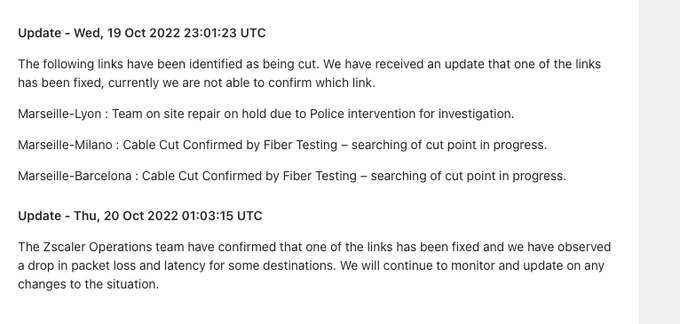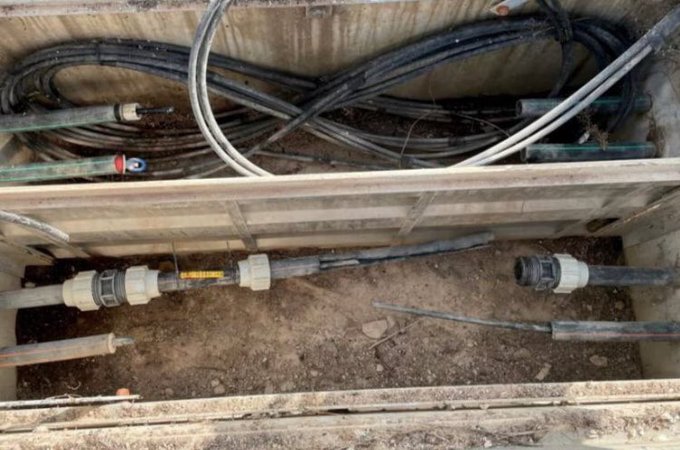Veel sidekaablite lõhkumisi Euroopast
It's moving beyond coincidence perhaps. Yesterday there were three cable cuts in the Med.
Marseille-Lyon
Marseille-Milano
Marseille-Barcelona
 https://twitter.com/gavinsblog/status/1 ... 9335116801
https://twitter.com/gavinsblog/status/1 ... 9335116801
A major Internet cable in the South of France was severed yesterday at 20:30 UTC, impacting subsea cable connectivity to Europe, Asia, and the United States and causing data packet losses and increased website response latency.
https://www.bleepingcomputer.com/news/t ... in-france/
EDIT: 22.10.2022
Prantsuse sidekaablite lõhkumisest veel
French police is investigating multiple coordinated cuts to fiber-optic cables in Marseille, cutting the city off from other cities in France and Europe as internet and phone services have been severely disrupted.
 https://twitter.com/visegrad24/status/1 ... 2018493441
https://twitter.com/visegrad24/status/1 ... 2018493441
Läbi Marseille lähevad suuremad ühendused piirkonnas ning on piirkonna suurimaks jaotuskeskuseks paljudele teenustele.
This demonstrates just how significant Europe has become in the last five years. In 2013, the region was characterised as an emerging global Internet hub, whereas today it boasts six out of the top ten largest Internet hubs in the world. The global first place goes to Frankfurt, followed by London, Amsterdam, then Paris. Fifth place is Stockholm, and for the first time Marseille makes the top ten list, coming in at number nine, beating Hong Kong and just one place below New York.
For decades, the main European Internet hubs have been known by the acronym FLAP – Frankfurt, London, Amsterdam, Paris. But the growing demand for online content from Africa, the Middle East and Asia, combined with its unique geographical location, has led to Marseille becoming the fastest growing Internet hub on the continent.
Because of its unique geography at the crossroads between Europe, Africa and the Middle East and its historical maritime port activity, Marseille offers an incredible submarine legacy that few cities in the world can compete with: a gathering of 14 submarine telecommunications cables, including the latest AAE-1 and SEA-ME-WE 5 cables, which connect Europe, Africa, the Middle East, and Asia. Today, thanks to this legacy and new deployments, Marseille enables access to 43 countries and 4.5 billion reachable users. By 2025, the number of cables is expected to increase to over twenty and the maximum capacity on these cables is expected to quadruple from 160Tbps today to 640Tbps.
A look at PeeringDB, the public database where networks and data centres register their presence in a city, reveals that Interxion MRS1 and MRS2 are the home of content delivery networks (CDNs), cloud and content platforms, including Amazon Web Services, ebay, Google, Yahoo, Twitch, Microsoft Azure, Akamai, Arkena, Cloudflare, Limelight and Verizon Digital Media Services. In terms of total traffic flows, Marseille currently experiences 32Tbps but anticipates over 120Tbps in the near future. Public peering is expected to grow from 140Gbps to more than 4Tbps and the number of networks present, today over 150 of them, is predicted to increase to over 200, helping digital media traffic share to surge from 10% to around 60 to 70%. This data paints a convincing picture of Marseille as an Internet success story for the 21st century.
https://www.capacitymedia.com/article/2 ... -marseille


